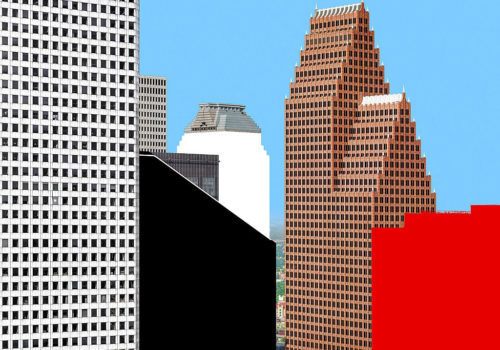“I’ve never been interested in photography, but in images. I believe my work starts where photography ends”, Olivo Barbieri states. And that’s what the exibit at the MAXXI in Rome suggests: images, quite amazing and colorful, dealing with Italy’s landscape, its provinces, as well as the collapse of the legend of modernity and the globalization of the Far East, the cities viewed from above, nature.
The retrospective focuses on Barbieri’s research, his attention to perception, his aptitude to interpret reality, beyond conventional modes of representation. “From the porticoes of the cities of Emilia to the reticular megalopolises of the planet, from crowded stadiums to the mutable profiles of certain natural spaces, Olivo Barbieri investigated the way we look at the contemporary world”, Giovanna Melandri, President of Fondazione MAXXI, says.
His work it’s not only an investigation of urban space and architecture: the framework of Barbieri’s research, which is more keen to the analysis of the concept of perception, and our skill to see and interpret reality. “Through an experimental use of photographic instruments and language, Barbieri undermines the usual modes of representation. He is not interested in faithful reproduction, or to make the world spectacular, but in translating his personal perception of what’s visible into narration”, Margherita Guccione, Director MAXXI Architettura explains.
The exhibit is structured in seven sections illustrating the photographer’s work since the 1970s to the present. From the early pictures of pinball machines discovered in an abandoned factory that play with the decadent icons of modernity, to nocturnal images of urban settings, visions of paintings in museums; from the exploration of Italian cities and of their outskirts in the 1980s to China and the Far East; from his experiments with “selective focus” in the 1990s, to the aerial views of cities around the world. His new work, dedicated to conurbation and landscapes of the Adriatic Coast and produced for MAXXI, is also on view.
“In the 1990s we have witnessed the rise of an Italian school of photography, with a lineup of interesting figures such as Luigi Ghirri, Gabriele Basilico and Massimo Vitali, with their focus on landscape, urban spaces and architecture. Barbieri has been following this trend, extending his work to the global world in terms of subject and language”, Hou Hanru, Artistic Director MAXXI says.
He aims to capture this changing of the image of the world, through a “selective focus” that presents phenomena afresh, giving the images a meaningful depth and suggesting the “imminent, the possible, and the unpredictable” as well as by using “distance” to decipher and to perceive cities as living organisms. “I started to use a helicopter to distance myself from the sound of words, to see the city from afar, a long way from voices. What interests me is the form of the city”, Barbieri says.
Barbieri’s photography stands on the line between a photograph representing a place and the use of a language which suggests the ambiguity of any representation, between the certain and the uncertain, the real and the plausible, investigating the processes of seeing and knowing.
Catalogue: Olivo Barbieri. Immagini 1978-2014, Edizioni Marsilio, Venezia 2015, 216 pages. Texts by Hou Hanru, Pippo Ciorra, Margherita Guccione and Francesca Fabiani.
EXHIBITION
Olivo Barbieri. Immagini 1978 – 2014
29.05.2015 > 03.01.2016
MAXXI Museo nazionale delle arti del XXI secolo
Via Guido Reni 4A
00196 Rome
Italy
















